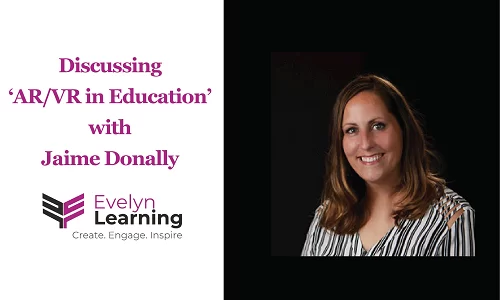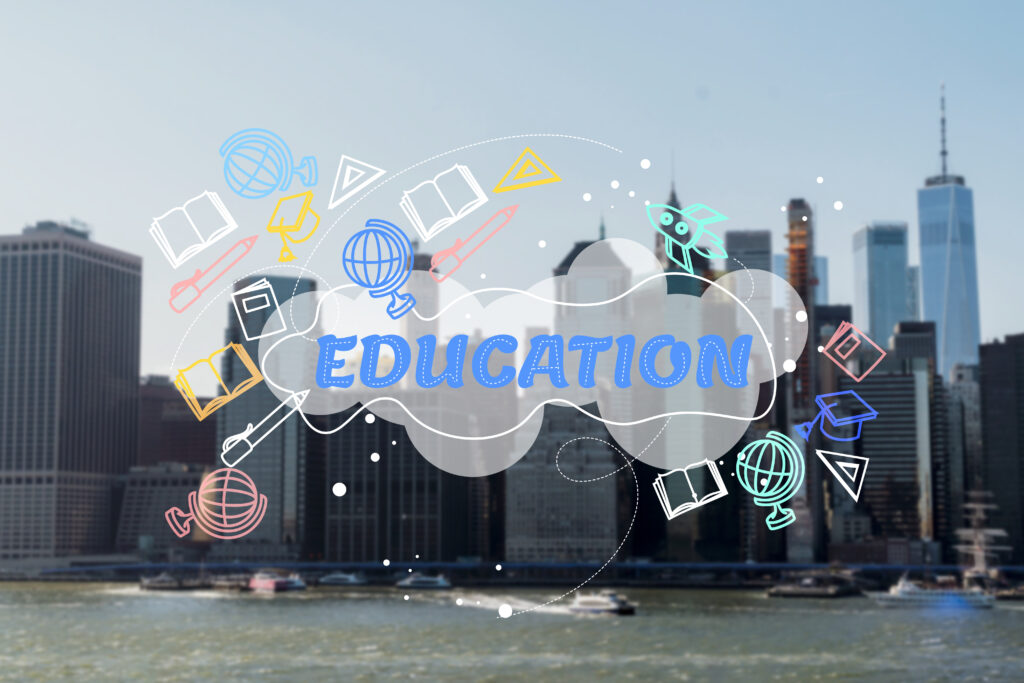Immersive technology is the new face of education, and we are not denying it. It is interesting. It is engaging and we should invest in it. This is what Jaime Donally invokes and advocates for schools, teachers, and administrators.
Jaime is an educational consultant and technology enthusiast. She started her professional journey as a Math teacher and soon moved to instructional consulting.
Jaime is the founder of ARVRinEdu and Global Maker Day. She is also a persuasive author who has written extensively about immersive technologies in her books: ‘The Immersive Classroom: Create Customized Learning Experiences with AR/VR’ and ‘Learning Transported’.
I had the honor of speaking with Jaime Donally in our series of ‘Ed-Insights by Evelyn’.
In this series, we have a brief interaction with leaders and experts from the Education industry to help us get a wide and assorted perspective on various themes.
Jaime Donally joined us to talk about AR/VR in Education.
Also read about Influencing the Future of Education with AR/VR
She enlightened us on how AR/VR can be evolutionary for education and how important and easy it is to incorporate immersive learning into our learning methods. Here is the brief of what she had to say:
How can we include AR/VR technology in education given the resourcefulness of the schools?
It depends on how you’re using it. I am an advocate of using the technology we already have in schools first and then identifying if there’s a need later to expand that. I think oftentimes people think they have to go out and have a big budget and buy these high-end devices when that’s not the best place to start. It would typically not give you the biggest bang for your buck.
In addition to that, I do agree with its equitable access. Many of our students struggle to have the latest and greatest device on a personal side, and certainly, our classrooms are even behind that.
A lot of the tools that I share are available on older devices, and on devices that are mobile. The problem that we run into in education is the school district having an access to those devices, their owning them, and protecting them.

But we can maximize the idea by using the tools that our students are already bringing into the classroom, and tools they are already familiar with. We can leverage the tools that students (some of them if not all of them) do have access to, like Chrome books, computers, or iPads. So there’s a way to be resourceful about it.
Who, according to you (teachers, parents, or students) are more inclined or reluctant to include AR/VR in learning styles and why?
Well, the older you are, the higher probability that you’re not going to be as gung-ho ready to jump in. I am in my forties and I can understand how it feels to learn something new.
I think some of the problems that our teachers or administrators face is understanding what they are accountable for. So, are they accountable for bringing AR/VR into their district? Unlikely! They need to really have a vision for bringing that and understand the value of it. They can analyze how it meets students’ needs, and what students are building or capable of building with technology tools and then have some win over it, believe in it and buy into it, and that is only where the conflict mostly arises.
You may also like Technology in Education: An overview
On the other hand, students are really drawn to immersive experiences. That’s just naturally part of what they’re experiencing right now, including their social media and how they’re using technology. We have to give students an opportunity to deeply engage with technology and keep their enthusiasm spot-on with the learning outcomes.
The parents’ reactions are mixed. Some are excited about how technology affects every aspect of our lifestyles. Others express concerns related to privacy and data usage and I completely agree with that. Parents and students should be mindful of what information we are giving, who owns that information, and how it would be used. But we are slowly heading in that direction, which protects our data and privacy for students.

Students are excited for technology but some parents carry concern for privacy as well
How do you evaluate if the use of technology (AR/VR) has actually helped in achieving learning outcomes for students?
When it comes to what tool is valuable and what isn’t, I really think it depends on what our goal is. So for example, my husband who is a science teacher told me about a student with autism. The student comes with a person to support him in the classroom.
One day, that person could not accompany the child, so the child was all over the place that day. My husband gave him the incentive to use merge cubes if he finished writing and then let him understand the science concepts through the use of merge experience on iPad and the student was blown away. He was completely involved.
What we can learn from this is that we need to have sustainable technology around that can transform how students are learning.














